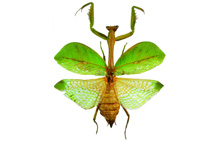Abstract
Gyrodromella represents a subgenus of the osmiine bee genus Chelostoma (Megachilidae) containing eight species, which are confined to the Palaearctic region. Analysis of female pollen loads, field observations and literature data suggest that all C. (Gyrodromella) species are oligolectic harvesting pollen exclusively on flowers of Campanula and possibly also closely related Campanulaceae genera. Preexisting linear cavities in dead wood or stems serve as nesting sites and mud partly combined with pebbles is used for the construction of cell partitions and nest plug. The taxonomic revision of C. (Gyrodromella) revealed the existence of two undescribed species: C. clypeale spec. nov. from central and eastern Turkey, and C. tonsum spec. nov. from eastern Turkey. Chelostoma confusum (Benoist, 1934) and C. proximum Schletterer, 1889 are newly synonymized with C. rapunculi (Lepeletier, 1841), and a lectotype of C. handlirschi Schletterer, 1889 is designated. Keys for the identification of all C. (Gyrodromella) species are given.

